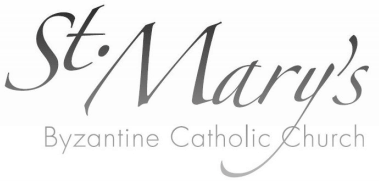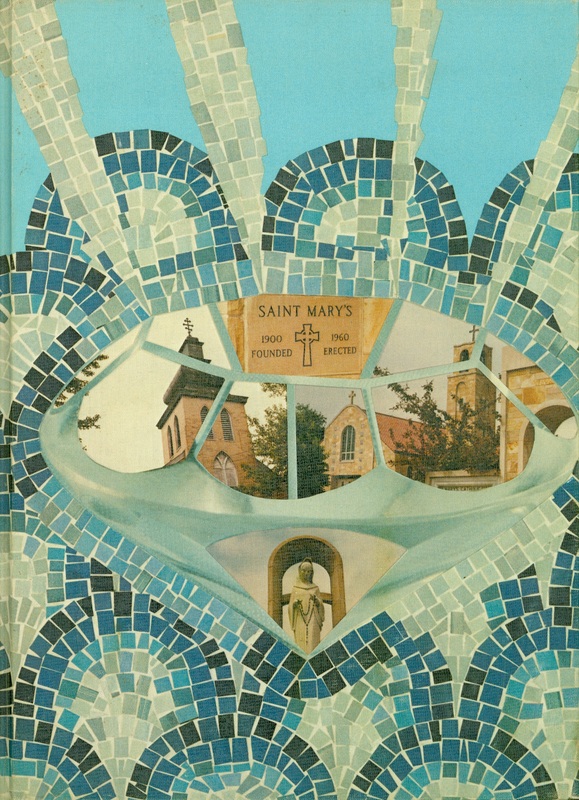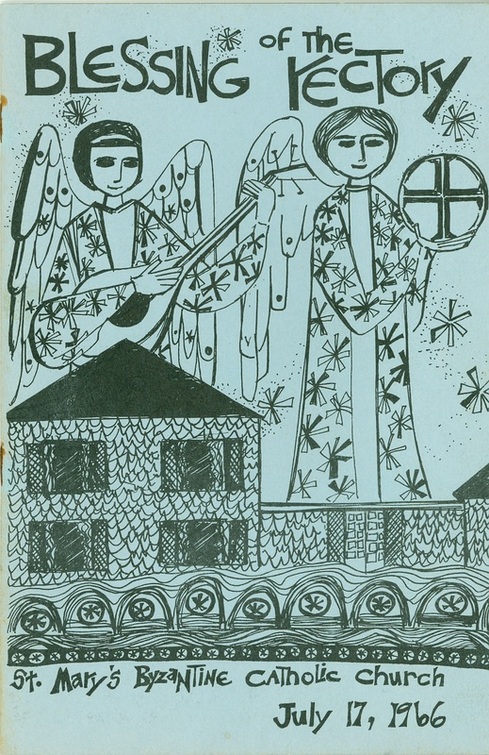History
|
In the late 19th century, when many people immigrated to America from the then Austro-Hungarian Empire, some came to settle in the Steelton section (westside) of Youngstown. In search of a better life, they sought employment in the local steel mills of this industrial area. As these devout Greek Catholics grew in numbers, the task of organizing a church became a high priority. Leaders for this effort emerged from this area as well as from the neighboring communities of Haselton (east side Youngstown), Campbell, Struthers, Warren, and Newton Falls in Ohio and across the state border in Sharon, Pa. In December 1899, property on Florence Avenue (near Steel Street) was purchased. By July 4, 1900, the small wood-frame, basement-less church was dedicated. Father Anthony Mhley conducted the first church services.
|
During this time a rectory was built on the property. Land on South Schenley Avenue was purchased on September 13, 1902 for a cemetery which still exists and is used as a final resting place for parishioners. On January 19, 1907, a third purchase included a small building adjoining the church property. This eventually became the cantor’s residence and was last occupied by Professor Michael Vuksta, who served the parish for many years. Professor Vuksta also began a choir to sing the responses to the Divine Liturgy. The choir also was directed in later years by Mr. George Hress and Mr. Thomas Hritzo.
The Baptismal Register shows that an amazing number of individuals were initiated into the Greek Catholic Church in the early 1900s. 55 were baptized in 1901; 90 in 1902; 115 in 1903; 143 in 1904; 180 in 1985; 125 in 1906; 155 in 1907; 173 in 1908; 165 in 1909; 153 in 1910; 150 in 1911; 93 in 1912; 96 in 1913; 92 in 1914; 83 in 1915 and 100 in 1916. This might be the sign of a very large parish, but
soon individuals from across town would break to form their own parishes. Among these were the Ruthenian parishes of St. Nicholas, Youngstown, St. Michael in Campbell, and SS. Peter and Paul in Struthers (now Infant of Prague in Boardman); SS. Peter and Paul in Warren, Ohio and St. Michael Church in Farrell, Pa. (now located in Hermitage, Pa.). Also, St. George in Youngstown formed to serve those of Hungarian descent, and Holy Trinity in Youngstown was to serve Ukrainian immigrants. St. Mary Church grew during this time when the early basementless church then added another floor above the original to serve as the new place of worship. The church experienced another division when disgruntled parishioners left the church to found St. Michael Greek Catholic Russian Orthodox Church nearby on Steel Street in Youngstown.
In 1952, property was purchased by St. Mary, St. Nicholas, and St. George parishes in Youngstown, St. Michael Church in Campbell and the former SS. Peter& Paul Church in Struthers to build a parochial school. Our Lady of Perpetual Help School, which later became known as Byzantine Catholic Central School, was dedicated on May 13, 1956. The former Oles mansion on the property became the convent for the sisters who would teach our children. The school was first staffed by Sisters Servants of Mary Immaculate and later by Sisters of St. Basil the Great. This school continued to serve our parishes until the end of the 2008-2009 school year, when it was forced to close because of dwindling attendance. The joint venture by the five parishes proved to be the last school to close within the Archeparchy of Pittsburgh. The property was sold in June 2011 and now houses Turning Point Counseling services, which provide treatment for depression, anxiety, suicidal tendencies, drug and alcohol addiction, sleep and personality disorders and many other adult behavioral health problems.
soon individuals from across town would break to form their own parishes. Among these were the Ruthenian parishes of St. Nicholas, Youngstown, St. Michael in Campbell, and SS. Peter and Paul in Struthers (now Infant of Prague in Boardman); SS. Peter and Paul in Warren, Ohio and St. Michael Church in Farrell, Pa. (now located in Hermitage, Pa.). Also, St. George in Youngstown formed to serve those of Hungarian descent, and Holy Trinity in Youngstown was to serve Ukrainian immigrants. St. Mary Church grew during this time when the early basementless church then added another floor above the original to serve as the new place of worship. The church experienced another division when disgruntled parishioners left the church to found St. Michael Greek Catholic Russian Orthodox Church nearby on Steel Street in Youngstown.
In 1952, property was purchased by St. Mary, St. Nicholas, and St. George parishes in Youngstown, St. Michael Church in Campbell and the former SS. Peter& Paul Church in Struthers to build a parochial school. Our Lady of Perpetual Help School, which later became known as Byzantine Catholic Central School, was dedicated on May 13, 1956. The former Oles mansion on the property became the convent for the sisters who would teach our children. The school was first staffed by Sisters Servants of Mary Immaculate and later by Sisters of St. Basil the Great. This school continued to serve our parishes until the end of the 2008-2009 school year, when it was forced to close because of dwindling attendance. The joint venture by the five parishes proved to be the last school to close within the Archeparchy of Pittsburgh. The property was sold in June 2011 and now houses Turning Point Counseling services, which provide treatment for depression, anxiety, suicidal tendencies, drug and alcohol addiction, sleep and personality disorders and many other adult behavioral health problems.
St. Mary's Dedication (1961)
|
In 1956, a strong desire grew among parishioners to relocate and to build a new and larger church. The monumental task of planning, seeking bank loans, and overseeing construction fell upon the shoulders of the new young pastor, Father John Pohorlak. In July, 1960 a large, magnificent church structure on South Belle Vista Avenue was dedicated. Its completion was a splendid tribute to the hard work and commitment of its pastor. The basement of the church became the scene where pirohy sales, noodle sales and fish fries would draw many from the area for these delicious foods. Soon the women would begin to cater wedding receptions and serve other delicious dinners here.
The next major project was the erection of a huge four-bay garage to house the busses used to transport our children to the parochial school. The project was completed in 1963 under the guidance of the new pastor, Father John Ycoback. This energetic young priest demonstrated remarkable leadership. His ability to involve large numbers of men of the parish in employing their talents, skills and time for their church saved thousands of dollars. By 1965, a beautiful and spacious rectory and car garage was built between the church and the bus garage.
|
|
To raise funds to operate the parochial school, Father Ycoback proposed the building of a new social center. As the steel mills which drew the original founders and members of the parish and employed many men of the parish closed, many were found to be without employment. Taking advantage of this dire situation and turning it for the benefit of St. Mary Church, a construction company was contracted with to raise the shell of what would become the Assumption Social Center on adjoining property which was purchased from the remaining Wick Estate. Parishioners with experience in construction joined together with these temporarily unemployed men to form what would become the“Gratis Construction Company” and spent many hours of many days doing all the finishing work to complete this new parish building. By 1983 the Assumption Social Center was completed which proved to be a grand edifice and a crown jewel among buildings in the Mahoning Valley. This edifice sees thousands of people yearly enter for wedding receptions from 300 to 500 guests, funeral luncheons and high school proms all catered by women of the parish who have been serving in this capacity for over 50 years. The Bingo games which began in the basement of the original church, moved to the basement of the existing church are now housed in the Social Center two evenings each week and provide ample space for Bingo players often numbering over 200. The center also provides space for the Golden Pillars senior citizens for their monthly gatherings, monthly Adult Enrichment sessions, quarterly GCU Lodge gatherings, and two communion breakfasts annuallyfor the Rosary Society. Twice yearly in May and November voters arrive to register in one of the eight precincts that are housed in the Center.
St. Mary's Commemorative Edition (1900-75)
|
Blessing of The Rectory (1966)
In 1987 renovation to the interior of the church began with the installation of a mosaic picturing the procession of the Apostles with the icon of the Mother of God, patroness of the church, installed in the entire sanctuary area. Also that year, a beautiful new entrance was added to eliminate the steps to the church, making the church handicapped-accessible.
Very Rev. Richard Lambert, a vocation of St. Mary Church, has served as its pastor since 2001. During his pastorate a major renovation of the Church by Eikona Studios, Inc. of Cleveland was carried out to mark the 50th anniversary of the church edifice. An icon screen was installed using existing marble from the sanctuary of the church, steps beneath the altar were removed and the altar was reconstructed into a proper square. The color of the pews was changed to enhance the wall colors and icons of the Paschal Sundays; various saints were added to the walls of the church, and new carpeting was installed.
St. Mary’s boasts two other parish vocations in the persons of Monsignor Alexis Mihalik (retired), and Father James Ragan, pastor of Holy Ghost Church, Charleroi, Pa. Presently serving as cantors are Ms. Linda Wibly and Mr. Daniel Kovachik. Linda also serves as full time parish secretary and manager of Assumption Social Center. Daniel, along with Mr. William Allison, serves full time as parish custodian.
|




